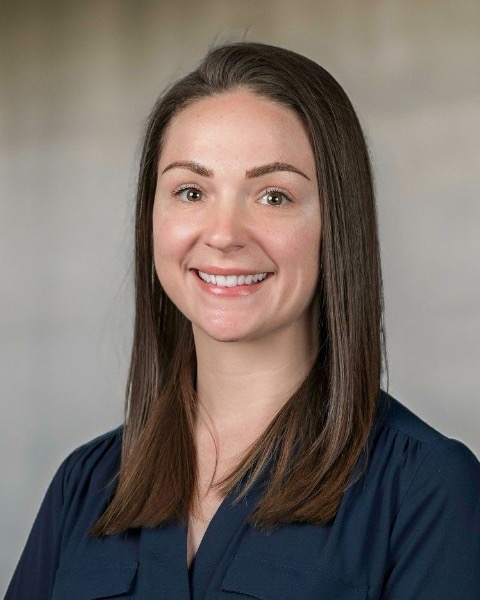Health Equity/Social Determinants of Health 2
Session: Health Equity/Social Determinants of Health 2
423 - The Rising Tide Lifted Which Boats? Using Equity-Focused Quality Improvement Tools to Assess Routine Perinatal Mental Health Screening in a Neonatal Intensive Care Unit
Saturday, April 26, 2025
2:30pm - 4:45pm HST
Publication Number: 423.6542
Kelsey Carrigan, University of Minnesota Medical School, Minneapolis, MN, United States; Ellen Diego, University of Minnesota Masonic Children's Hospital, Minneapolis, MN, United States; Rachel E. Witt, University of Minnesota Medical School, Mahtomedi, MN, United States; Delaney Wilton, University of Minnesota Medical School, St. Paul, MN, United States; Brittney Skalland, University of Minnesota Medical School, Minneapolis, MN, United States; Maria Kroupina, University of Minnesota Medical School, minneapolis, MN, United States; Megan Paulsen, Children's Hospitals and Clinics of Minnesota, Eden Prairie, MN, United States; Andrea Lampland, Children's Minnesota, St Paul, MN, United States; Erin Osterholm, University of Minnesota Masonic Children's Hospital, Minneapolis, MN, United States; Ann Downey, Children's Hospitals and Clinics of Minnesota, Minneapolis, MN, United States; Sarah A. Swenson, University of Nebraska College of Medicine, Omaha, NE, United States

Kelsey Carrigan, MD (she/her/hers)
Resident Physician
University of Minnesota Medical School
Minneapolis, Minnesota, United States
Presenting Author(s)
Background: Parents in Neonatal Intensive Care Units (NICU) are at high risk for perinatal mental health (PMH) concerns that may be further exacerbated by social/economic marginalization. Systemic racism undermines fair access to resources and is often related to socioeconomic status (SES). Frequently cited barriers to accessing care involve financial limitations, including lack of insurance coverage, transportation, childcare and time off work, as well as lack of culturally-responsive care and English language proficiency. Quality improvement (QI) methodology has been used to implement PMH screening in NICUs; however, without a strict equity focus, interventions can disproportionately benefit advantaged groups and worsen existing disparities.
Objective: We aimed to achieve 70% PMH screen completion for parents of infants hospitalized in a level IV NICU within 6 months. This analysis stratified participants by demographic groups to assess whether screening was equitable.
Design/Methods: In this single-center QI initiative, social work introduced and completed screening of eligible parents. The process measure of screen completion is displayed in 2-week epochs using run charts for each group of interest. Parents were stratified by likelihood to experience racism, SES, presence of childcare-related barriers, and preferred language. We classified non-Hispanic White parents as less likely to experience racism and non-White or Hispanic parents as more likely to experience racism. Insurance status was used as a proxy for SES. Parents with unknown insurance or who chose not to answer race or ethnicity were excluded.
Results: 195 of 268 eligible parents were screened with a median PMH screen completion rate of 78%. The median completion rate was higher for parents who were less likely to experience racism (89% vs. 63%), who had higher SES (70% vs. 43%), and who had no childcare-related barriers (100% vs. 56%). The median completion rate increased for parents with higher SES and with childcare-related barriers. We were unable to assess the impact of preferred language due to limited sample size.
Conclusion(s): Although we achieved our aim of screening 70% of all parents, our completion rates were disproportionately higher among advantaged groups. Conclusions are limited by the exclusion of parents with unknown insurance or who chose not to answer race or ethnicity. Further work is needed to identify systemic barriers that contribute to inequitable PMH screening and to improve access to PMH support for all NICU families. Efforts to include families and community members who are marginalized should be prioritized.
Figure 1
.png) Percent of parents screened and median completion rate by likelihood to experience racism (a), socioeconomic status (b), and presence of childcare-related barriers (c).
Percent of parents screened and median completion rate by likelihood to experience racism (a), socioeconomic status (b), and presence of childcare-related barriers (c).Figure 1
.png) Percent of parents screened and median completion rate by likelihood to experience racism (a), socioeconomic status (b), and presence of childcare-related barriers (c).
Percent of parents screened and median completion rate by likelihood to experience racism (a), socioeconomic status (b), and presence of childcare-related barriers (c).

